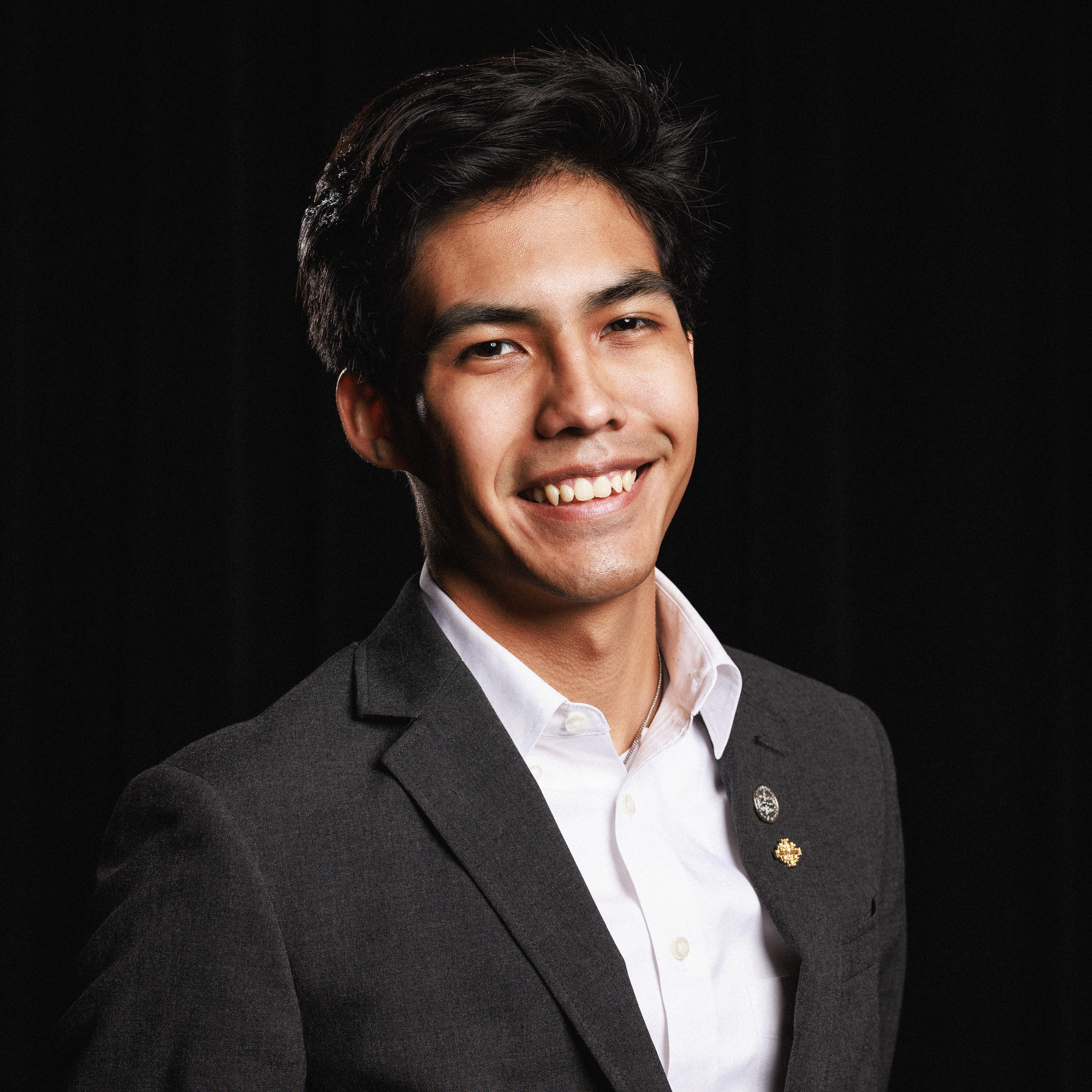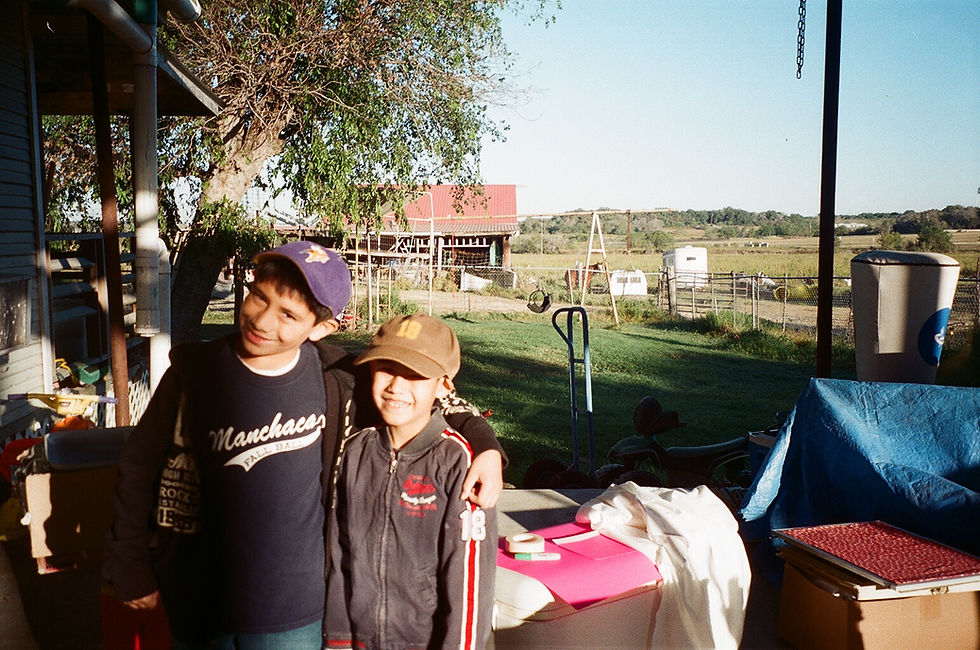Mission: A Spiritual Journey - An Essay
- uncoyotesanto
- Jun 4
- 7 min read
Updated: Aug 19
Mission is a 2025 documentary film by 22-year-old filmmaker Diego Joaquin Campos. This person is, of course, myself. The making of Mission was an equally challenging, risky, and fruitful undertaking. I have benefited greatly as a person and craftsman in the process of creating this project. While the project has been a constant of my life from August 2023 until April 2025, it has seen me through spiritual peaks and troughs—from the euphoria of fellowship at SEEK24 in St. Louis to the tragic passing of my cousin two months later. Why is it important? What was it that I hoped to achieve? Couldn’t the same goal be attained through a series of webisodes? Perhaps. However, it would not have been authentic to my person. I am a storyteller. Beyond that, I am a filmmaker. I believe in preservation of original intention, vision, and execution. Thus, my process relies heavily on truth, goodness, and beauty. At the heart of my work lies my faith.
There is something intensely spiritual about crafting a story. Where is story? It is found in the projection of the self on one’s environment (both social and physical). What is story? It is the journey of the human person, overcoming something—the self, the other, the construct, nature. What is the story of Mission? The story is your story. Who are you? Are you the girl making a new home? Are you the man overcoming despair? Hope is the story of Mission. Ultimately, this became my guiding principle throughout the filmmaking process.
As a documentary, Mission is unique. This is for a few reasons. First, it is a story told from within the organism. Typically, a documentary is told looking in from the outside to prevent any level of bias, particularly for journalism. However, I am not a journalist, and Newman Hall is not a war zone (save for a spiritual one). Second, it was edited to a high degree of completion in sections. That is to say, the first twenty minutes were originally edited as a single twenty-five-minute mini-documentary. Third, all production was done by a single individual (myself). This could lead to considerable blind spots. However, despite myself having final say, creative discourse was an important part of Mission’s creative process. The dialogue between myself and my professors was instrumental in cultivating a self-critical eye. Accountability is a very important element of filmmaking.
While filmmaking is my passion, it can be difficult to focus at times. During the late nights of editing, composing, and mixing, I often work ad nauseam. I mean this in the literal sense. When I have over-exerted myself and am very tired, I feel dizzy and am inclined to vomit. This is often when I know that I need to go to sleep (often at two or three in the morning). Of course, sleep is very important for the stimulation of ideas. Most ideas regarding the documentary were born in the liminal space between sleep and waking.
Dreams and meditation are a very important step in the inception of creative ideas. Of course, this includes spiritual meditation and prayer. The original idea for a documentary regarding the St. Brendan Catholic Campus Ministry was from an image which popped into my mind. The image was a thumbnail still of an episode, which contained a title and description. While I can’t recall the title, the description read something like: “As the CCM prepares for SEEK, Nathan struggles to coordinate funding.” Of course, this wasn’t an accurate description of happenings at the time of the dream. During these meditations, which often occurred to the sound of Hildegard von Bingen’s ancient monophonic chant, more was revealed to me. I began to understand that a school year consisted of a certain structure, and that this structure somewhat mimicked the structure of a narrative story. Mapping reality onto a narrative structure is difficult, but it was made simpler by my own experiences. I found that, in addition to mapping reality to narrative structure, I could also map my own experiences to a narrative structure—therefore creating a unique narrative structure, authentic to myself.
My thoughts and ideas for scenes were derived from actual experiences. These deeply personal experiences were used to create a simple blueprint for the structure of individual scenes. In a very real way, this was like the process in the making of Hollywood features: the practice of storyboarding. The bad ideas were mentally printed and simulated, then discarded or stored mentally for future use. There are a few examples of ideas being discarded mentally. Most of them I do not remember, but there is one. There was an initial idea, which had come to me individually and by others who had a skewed view of the purpose of the documentary. It was suggested that a reality show–esque couple be “set up.” Meaning, basically, that myself or another person would essentially guess who was going to end up together, then film their chemistry develop. There was not a worse use of time that could have occurred to me. It was cynical. This is why I discarded it.
There are also ideas which were conceived in meditation and made it to the final cut. The most obvious is the history of St. Brendan segment. Another example is the slow-motion walk by the CCM to the front of St. Brendan. Another was the sharing segment during SEEK24. I could not have known the details, but the basic structure was there. There were many other moments which were shot and edited, but were cut during the series-to-feature process.
If it has not been made clear, the Mission documentary was originally to be a small series of YouTube videos. It grew to a series of episodes but was later condensed into a feature documentary. The first cut of the feature-length version was about two and a half hours long. It included scenes from the episodes which filled out the story and time a little more. For example, the day before the finale of the Eucharistic procession, there was a field day. This field day was attended by CCMs from all around the Diocese of Fort Worth. Also in attendance were the Servants of the Pierced Hearts of Jesus and Mary. While the segment was fun and felt like a completion of the story (it was the weekend of Divine Mercy Sunday), it was ultimately cut. The segment added fifteen minutes to the overall film. Other scenes were cut or modified into shortened or enhanced versions, in service of the story.
While the Field Day and Eucharistic procession were planned for Divine Mercy weekend, the eclipse was not known to anyone until about a couple weeks before. Perhaps it was some sort of divine intervention that a total solar eclipse would happen on the ninth day of Easter, and the day after Divine Mercy Sunday. Considering the themes of redemption throughout the documentary, I believe it to be more than a coincidence. This heavenly event had to be juxtaposed with another heavenly event, the Eucharistic procession. The procession was the highest point of the semester spiritually. The solar eclipse is the highest point astronomically, at least locally. This is where the documentary needed to end.
I have been asked many times why the documentary did not end at the return from SEEK24. This was certainly a conscious creative decision. In an alternate timeline, it might have made sense. However, in this one it did not. With the loss of my cousin during spring of 2024, my perspective changed. It couldn’t end with a simple high point. It had to be transcendental—something unifying the human and divine. This is why the coinciding of the eclipse and procession were perfect. The procession, a reflection of heaven because it is pure worship and praise of Christ present in the Eucharist. Thus, ending with the solar eclipse—which Biblically happened at the sacrifice of Christ on the cross—seemed appropriate. The fact that they occurred within twenty-four hours of each other is beautifully poetic.
As a collection of thoughts, this paper serves as a reflection of my own perspectives on Mission. In two and a half years, I have grown into the person I am today. As I continue to grow, my purpose will grow clearer. One day in the future, these people will reunite. Some will be older; others will have deceased. Bad health, good health, innocence, trauma—all of these are human nature. How does the person change over a lifetime? How can this be illustrated through the Catholic faith, reuniting this found family many years later? If only I can be faithful enough to enter the Kingdom of God, taking a camera there to represent the glory of God.
A campus ministry as the Body of Christ: each more complete because of the whole, and the whole more complete because of the individual. Sharing ourselves and each other’s company is the surest way to experience the most of each other. There are good people out there, waiting to love you. Sometimes they are hard to find; often there are wolves in sheep’s clothing. Faith in the Supreme Being guides one to what is good, true, and beautiful. This is what I wish I could have told Jorgie before his tragic passing. I never said these words to him, only because I wanted to show him soon. Then the unthinkable happened. There are so many stories like his.
Therefore, the documentary is a projection of the self. As with any form of art, it comes from the innermost recesses of my soul. Yearning to be understood, yet not knowing how to express itself, my soul took my faculties. Creating this project was not only an exercise of skill and discipline, but a spiritual journey. I ended the 2023–2024 school year at Tarleton State University understanding myself and my faith better—not only understanding of the mind, but understanding of the soul.
Sincerely,
D. Joaquin Campos




Comments